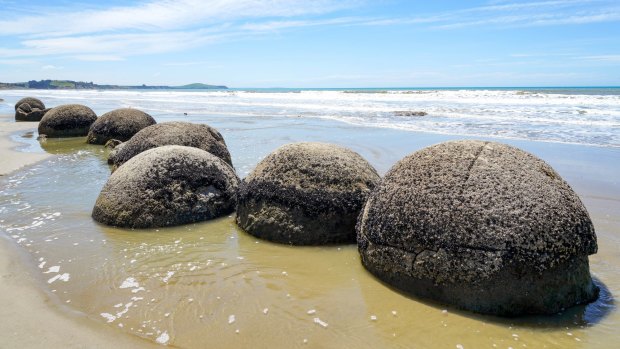This was published 2 years ago
New Zealand wild wonders: The country's lesser-known natural highlights
By Ute Junker
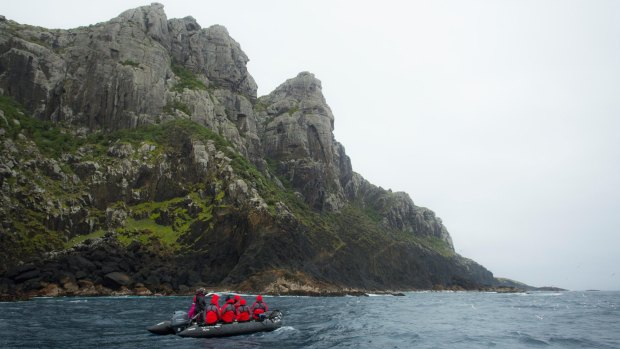
The Chatham Islands are so far east of New Zealand they have their own time zone.Credit: Alamy
When it comes to natural wonders, New Zealand lays it on thick. No matter which corner of the country you explore, you will find yourself immersed in majestic landscapes. From snow-capped mountains to tranquil lakes, dramatic fiords to ancient forests, New Zealand's great outdoors is always eye-catching.
Given the surfeit of stunning scenery, it's perhaps no surprise that there are some pristine landscapes that the locals have cannily kept to themselves. If you are looking for a different sort of natural high, these wild escapes fit the bill.
THE CHATHAM ISLANDS/REKOHU/WHAREKAURI
WHERE IS IT 800 kilometres east of the South Island, a two-hour flight from Auckland, Wellington or Christchurch.
IT'S ONLY NATURAL So far east of New Zealand that it has its own time zone, 45 minutes ahead of the mainland, this archipelago – once settled by the Polynesian Moriori people – now has fewer than 700 residents. Top sights on Chatham Island include the seal colony at Point Munning and the remarkable basalt columns at Ohira Bay; then there are the islands' indigenous flora and fauna, including the Chatham Island magenta petrel, the Chatham Island black robin, and the Chatham Islands forget-me-not.
LOCAL HERO Ask Greg Horler, the owner of Chatham Island's welcoming Awarakau Lodge, to pick his favourite place on the island, and he hesitates. The 90-metre coastal cliffs, he says, are "quite spectacular, with their sheer drop into the ocean". But he also has a soft spot for Te Whanga, the massive lagoon that covers much of the island. "I have a favourite camping spot beside the lagoon that is a great place to wake up," he says.
ONE MORE THING Pitt Island is the first inhabited place on the planet to see the sun rise. Catch the moment with a pre-dawn hike to the top of Mount Hakepa.
MORE chathamislands.co.nz
TONGARIRO NATIONAL PARK
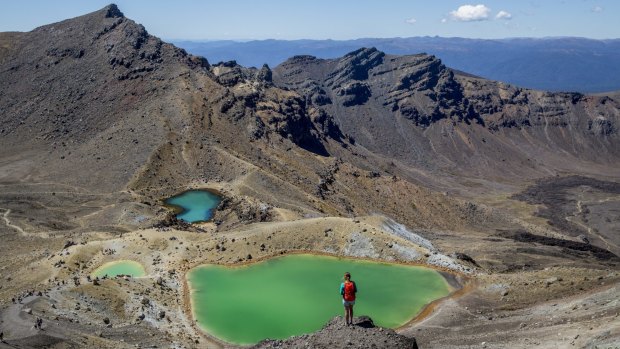
WHERE IS IT 300 kilometres south of Auckland.
IT'S ONLY NATURAL The surreal landscapes of New Zealand's oldest national park have been shaped by the three volcanoes at its heart, Tongariro, Ngauruhoe and Ruapehu. The area's emerald lakes, silica terraces and steaming vents and craters doubled as Mount Doom in Peter Jackson's The Lord of The Rings trilogy; other attractions include waterfalls –Taranaki Falls, Waitonga Falls, Silica Rapids and Tawhai Falls are all popular – and the country's highest café, Knoll Ridge, reached by a gondola ride.
LOCAL HERO There is something that Stewart Barclay, of Adrift Tongariro, wants all travellers to know: the hiking is even better in winter. "When we hand out the crampons, some people go, "Oh my God!", but once they start using them, they realise how easy it is," he says. Barclay leads guests on everything from full-day hikes to two-hour sunset walks, and says all you require is average fitness.
ONE MORE THING If you are ready to make a day of it, the 20 kilometre Tongariro Alpine Crossing is considered the country's most spectacular one-day hike.
MORE visitruapehu.com
POOR KNIGHTS ISLANDS
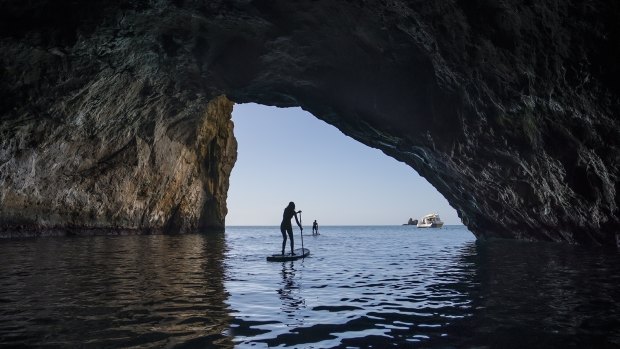
Credit: Alistair Guthrie/Tourism New Zealand
WHERE IS IT Off the coast of Northland, 180 kilometres north-east of Auckland.
IT'S ONLY NATURAL Get ready to be dazzled by what lies beneath the waves at this divers' paradise. Named one of the top diving sites in the world by Jacques Cousteau, the waters around the Poor Knights Islands - warmed by a current that flows down from Australia – are home to subtropical species such as gropers and moray eels as well as pelagic fish and large numbers of schooling fish.
LOCAL HERO "Pretty epic" is the way Kate Malcolm describes the local diving. The co-owner of Dive Tutukaka says the view changes every day. "We might see dolphins and pseudo orcas, or turtles. I have seen 20 to 30 stingrays stacked up like squadron bombers beneath Northern Arch, a 12-metre wide underwater archway."
ONE MORE THING It's not just the marine life that is remarkable; the underwater scenery ranges from kelp forests and sponge gardens to underwater arches, tunnels, and a network of caves including one of the largest sea caves in the world, Rikoriko Cave.
MORE tutukakacoastnz.com/
THE CATLINS
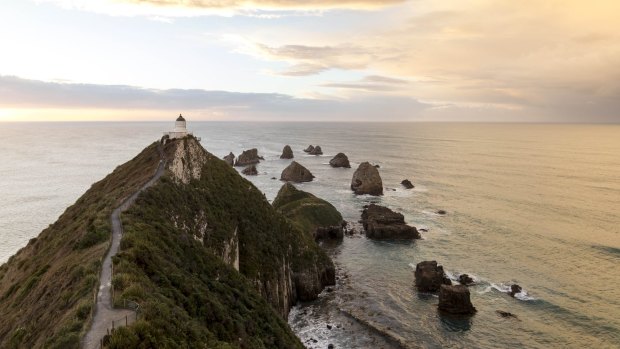
Credit: Graeme Murray/Tourism New Zealand
WHERE IS IT 150 kilometres south-east of Dunedin.
IT'S ONLY NATURAL From waterfalls and blowholes to a mirror lake, there is plenty to see in The Catlins. To discover one of the area's most remarkable attractions, however, you will have to wait for the tide to go out. That's the only time that the petrified remains of a 180-million-year-old Jurassic era forest are visible. These ancient fossils at Curio Bay are one of only three similar sites anywhere in the world.
LOCAL HERO A visit to the Catlins isn't just about ticking off one attraction, says Paul Duffy, chair of the South Catlins Charitable Trust that works to preserve and promote The Catlins. "It's about the whole raft of experiences you have as you travel through the landscape," he says. "People think they will stay a night but once they get a glimpse of the wildlife, the waterfalls, and the little communities nestled in the landscape, they realise they need much more time."
ONE MORE THING When you are gazing out to sea, keep one eye peeled for wildlife: you may spy yellow-eyed penguins or the resident pod of dolphins.
MORE catlins.org.nz
WAIPOUA FOREST
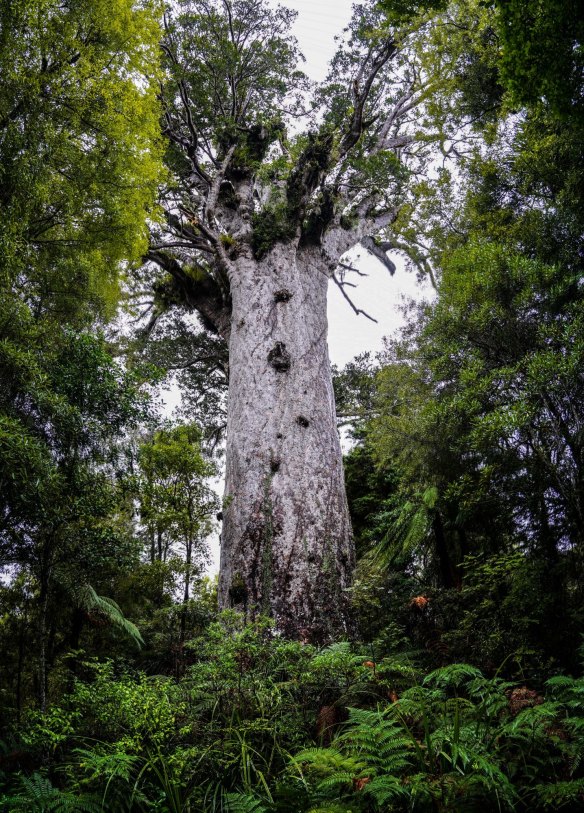
Credit: iStock
WHERE IS IT 230 kilometres north of Auckland.
IT'S ONLY NATURAL There's a softness to the light in the Waipoua Forest, filtered through the towering trees and landing softly on the beds of ferns that fringe the roads and trails. New Zealand's largest kauri forest, on the west coast of the North Island, is a place where visitors feel small – and never more so than when they are standing in front of the country's largest kauri tree. Tane Mahuta, the aptly-named Lord of the Forest, is 2000 years old, and soars almost 50 metres above the ground.
LOCAL HERO To Max Lloyd, being in the Waipoua Forest is a form of meditation. He works for Footprints Waipoua, which offers tours that allow visitors to see the forest through Maori eyes. Lloyd says that visitors love hearing tales of the auta, or forest gods. "We have a twilight tour that is a very special experience. At night, your senses are heightened, you experience the forest differently," Lloyd says.
ONE MORE THING The Lord of the Forest isn't the only impressive tree; Te Matua Ngahere, or Father of the Forest, has a trunk that is more than five metres in diameter.
MORE waipoua-forest.co.nz
STEWART ISLAND/RAKIURA
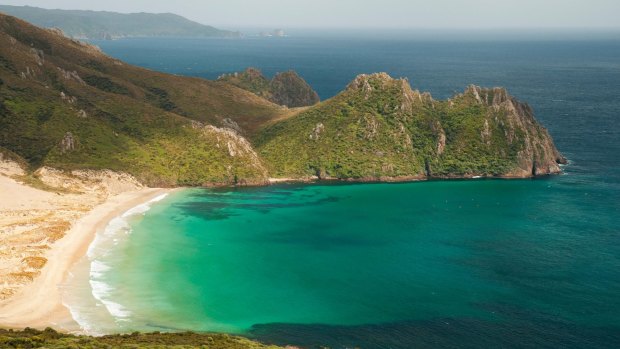
Credit: Alamy
WHERE IS IT 30 kilometres off the southern tip of the South Island.
IT'S ONLY NATURAL With 280 kilometres of trails and just 25 of road, walking is definitely the best way to explore the dramatic landscapes of Stewart Island which range from granite cliffs to lush forests, beaches and bays. Eighty-five per cent of the island is dedicated national park and, thanks to the lack of predators, this is also one of the best places to spot the kiwi. The normally-nocturnal bird regularly roams the dunes at Masons Bay in the early hours.
LOCAL HERO "Trampers [hikers] love Stewart Island," says Aaron Joy, of Stewart Island Backpackers. "We have three major walks, including the three-day Rakiura Track, and the longer Southern Circuit. However, Joy says the day hikes are just as spectacular. "We have 1700 kilometres of coastline, so there are incredible views to enjoy."
ONE MORE THING Stewart Island is an internationally-recognised Dark Sky Sanctuary, but it's not just stars you can admire here. Between March and September, Stewart Island is one of the best places to see the southern lights; indeed Rakiura, the Maori name for the island, means "glowing sky".
MORE stewartisland.co.nz
DUSKY SOUND/TAMATEA
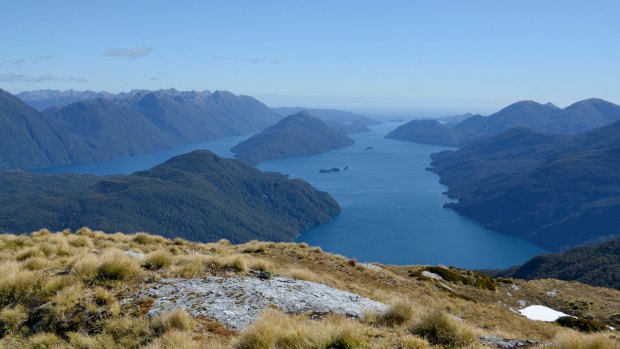
Credit: Alamy
WHERE IS IT 270 kilometres southwest of Queenstown.
IT'S ONLY NATURAL At 40 kilometres long and eight kilometres wide, Dusky Sound is the largest fiord in Fiordland National Park, but that's not what makes this such a special place. Accessible only by water or by air, exploring this fiord feels like entering a hidden world, a place set apart from the everyday. There is plenty to see in the expansive fiord, where small islands dot the water and misty waterfalls and craggy cliffs add a sense of drama.
LOCAL HERO The best thing about taking a helicopter tour of Dusky Sound, says Kim Hollows, of Fiordland Helicopters, is that the fun starts way before you reach the fiord. "Fiordland is a massive area, with 3.5 million acres of wilderness, and it's all below us as we fly," he says. He says guests are often surprised at the fiord's rich history. "We have a lot of [New Zealand] firsts, from the first house – built in Dusky Sound by sealers – to the first shipwreck."
ONE MORE THING Wildlife fans will delight in spotting local residents ranging from fur seals and bottlenose dolphins to penguins.
MORE southlandnz.com
TE WAIKOROPUPŪ SPRINGS
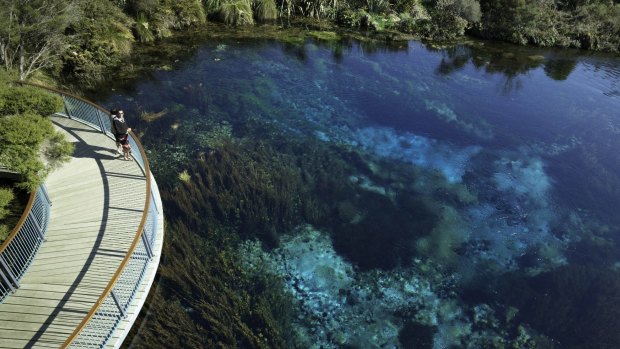
Credit: Craig Parry/Tourism New Zealand
WHERE IS IT 100 kilometres north-west of Nelson.
IT'S ONLY NATURAL New Zealand has plenty of freshwater pools and rivers, but nothing can compete with Te Waikoropupū Springs. The largest cold-water springs in the southern hemisphere pump out an astonishing 14,000 litres of water a second – they could fill 2400 baths every minute – but it's the clarity of the water, filtered for up to 10 years through the surrounding rock, that is really remarkable. Visitors can see virtually all the way to the bottom of the 10-metre deep pools.
LOCAL HERO "I always take new visitors to the springs – they are absolutely gorgeous," says Jane Dixon, who runs the Mussell Inn in nearby Golden Bay. "There's a gorgeous bushwalk to reach the springs, and the water appears to be boiling out of the ground, although actually it is very cold."
ONE MORE THING Leave your swimming costume at home. The springs are sacred to the Maori people, so swimming is not allowed.
IT'S ONLY NATURAL The plains of the Waitaki were once an ancient sea, and the resulting geological formations are some of the most remarkable in the country. They include the perfectly symmetrical Moeraki Boulders, up to two metres high and weighing several tonnes. Maori legend has it that these are gourds that wash ashore when the great voyaging canoe, Araiteuru, made landfall in New Zealand; scientists say they are calcite concretions formed 65 million years ago.
LOCAL HERO "When I first came here I was stunned by these amazing limestone formations, but working with geologists, I now realise that a rock is not just a rock – it always has a story," says Lisa Heinz of the Waitaki Whitestone Geopark. "What we try to do is draw the story together – to connect geological history with the animals and plants and humans that interacted with it."
ONE MORE THING Other local highlights include the surreal limestone formations at Elephant Rocks, the eroding pinnacles of Clay Cliffs near Duntroon, and Maori rock art sites.
MORE waitakinz.com
THE BAY OF ISLANDS
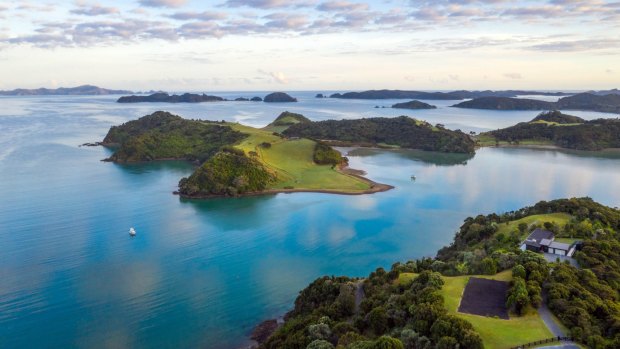
Credit: Shaun Jeffers/Tourism New Zealand
WHERE IS IT 230 kilometres north of Auckland
IT'S ONLY NATURAL The clue is in the name. The expansive Bay of Islands is littered with islands, more than 140 of them. With a combination of larger islands and smaller rocky outcrops formed by solidifying lava from ancient explosions, there are plenty of sandy beaches and sheltered bays to explore, whether you head out on a kayak, a yacht or a day cruise. Some of the loveliest destinations include the tranquil spots like Oke Bay and Horseshoe Bay, where you can hear kiwis calling at night.
LOCAL HERO "What I love about the bigger islands is that there are plenty of walks and tracks you can take before having a swim," says Vanessa McKay, of Carino Wildlife Cruises. "But the rocky outcrops are great because their sheer sides go straight down into the ocean, so you can get close enough to see seabirds nesting or jump in with a snorkel."
ONE MORE THING There is plenty of marine life around, from dolphins and penguins to stingrays, marlins and even whales.
MORE visitboi.co.nz
NZ'S BIGGEST NATURAL HITS
MILFORD SOUND
For sheer drama Milford Sound is hard to beat, thanks to those steep-sided cliffs plunging vertically to inky waters. Described by Rudyard Kipling as the eighth wonder of the world, this glacier-carved landscape is even more dramatic in rainy weather, when waterfalls seem to cascade down on all sides.
WAITOMO GLOW WORM CAVES
The green hills of Waitomo are picturesque but it's the labyrinth that lies beneath – limestone caves featuring stalactites and stalagmites, sinkholes and even underground rivers – that is simply spectacular. Among the highlights are glow worms that light up the caves with their bioluminescence.
FRANZ JOSEF GLACIER
Its icy vastness is imposing at a distance, but the mighty Franz Josef Glacier is even more impressive from close up. Few other glaciers are this accessible: a gentle 45-minute walk will take you to its very edge. Alternatively, you can admire it from above on a helicopter tour, or take a guided ice walk, which may include walking through one of the glacier's ice tunnels.
ROTORUA
When you smell the sulphur, you know you have arrived at Rotorua. One of the world's most active geothermal fields, Rotorua is a wonderland of mud pools, steam vents and magnificent geysers like Pohutu, which sends a plume of steam 30 metres into the air up to 20 times a day. Immerse yourself by floating down a hot stream, soaking in a natural hot pool or standing under a hot waterfall.
AORAKI/MOUNT COOK
Whatever inspires you about mountains – the jutting peaks, the permanent snow caps, or the icy glaciers – New Zealand's highest mountain has it all. There are plenty of spectacular hikes to choose from, from the gentle Hooker Valley Track to the more challenging hike to the Mueller Hut in the alpine back country, or you can take to the water and kayak amid the glaciers at Tasman Lake.
Sign up for the Traveller Deals newsletter
Get exclusive travel deals delivered straight to your inbox. Sign up now.
